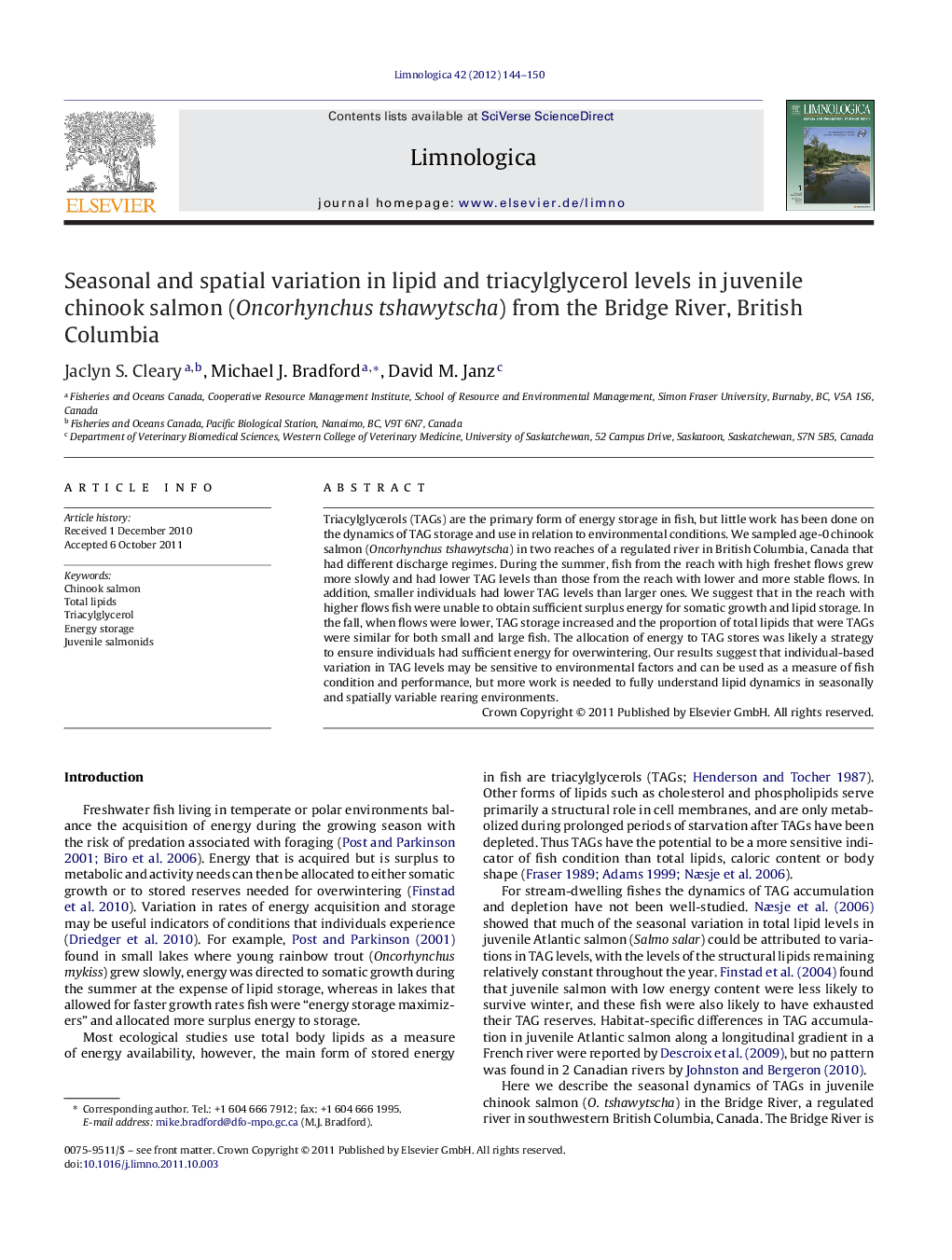| Article ID | Journal | Published Year | Pages | File Type |
|---|---|---|---|---|
| 4400530 | Limnologica - Ecology and Management of Inland Waters | 2012 | 7 Pages |
Triacylglycerols (TAGs) are the primary form of energy storage in fish, but little work has been done on the dynamics of TAG storage and use in relation to environmental conditions. We sampled age-0 chinook salmon (Oncorhynchus tshawytscha) in two reaches of a regulated river in British Columbia, Canada that had different discharge regimes. During the summer, fish from the reach with high freshet flows grew more slowly and had lower TAG levels than those from the reach with lower and more stable flows. In addition, smaller individuals had lower TAG levels than larger ones. We suggest that in the reach with higher flows fish were unable to obtain sufficient surplus energy for somatic growth and lipid storage. In the fall, when flows were lower, TAG storage increased and the proportion of total lipids that were TAGs were similar for both small and large fish. The allocation of energy to TAG stores was likely a strategy to ensure individuals had sufficient energy for overwintering. Our results suggest that individual-based variation in TAG levels may be sensitive to environmental factors and can be used as a measure of fish condition and performance, but more work is needed to fully understand lipid dynamics in seasonally and spatially variable rearing environments.
